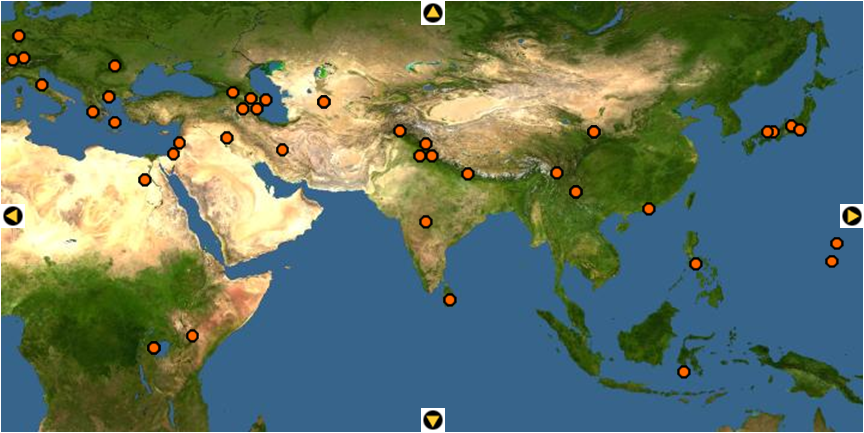Habitat
Punica granatum is believed to have originated long ago in the Middle East, more specifically Iran and Northern India. (Check out another plant native to this region, the Hawaiian baby wood rose.) The pomegranate has been around since ancient times; references to the pomegranate may be found throughout the Bible. The tree prefers low-humidity environments and thrives in warm areas that are protected from the wind. Although it may persist through short periods of drought or flooding, blossom formation may decrease or even halt under these circumstances. It prefers to be in full sun; shading due to overcrowding may lead to a lack of fruit production. Frost also decreases fruit production. Although mature plants may be able to tolerate frost, they often lose the ability to bear fruit after experiencing these conditions.
Pomegranate trees prefer soil with a neutral pH. However, they may be found in soil with a pH as low as 5.5 as long as efficient drainage system is in place. They may grow in a variety of mediums - they have even been known to take root in loose gravel! The photo below shows an example of the type of environment Punica granatum is known to inhabit.
Today, pomegranate trees are found throughout the world. They excel in sub-tropical regions. Spanish settlers introduced the pomegranate tree to America in 1769. They are currently grown in various warm regions throughout the United States. California is among the world’s leading commercial producers of the fruit (along with Spain and Turkey). Below is a world map of the distribution of Punica granatum.
This map, created at DiscoverLife.org, shows the distribution of Punica granatum throughout the world. Click on it to visit the site and learn more information about the species.
To find out how the pomegranate tree is able to thrive in its
habitat, click on ADAPTATIONS.


